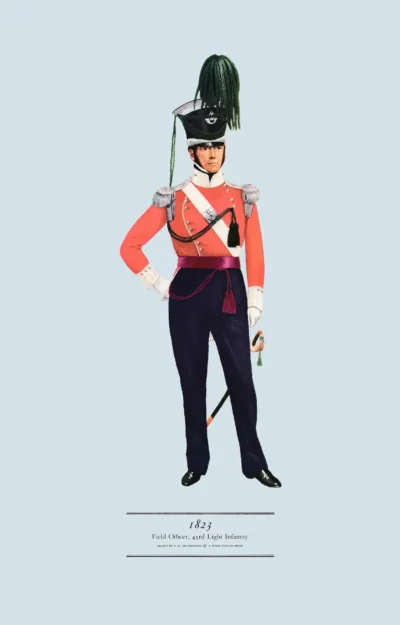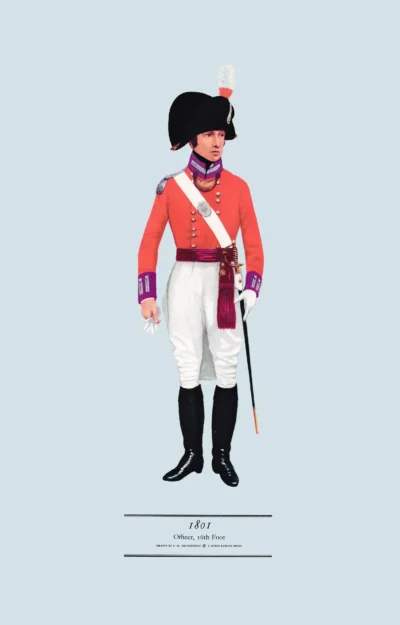Officer, 56th Foot, 1801 (Essex Regiment)
£12.50
The Essex Regiment was ultimately merged into the 1st Battalion, The Royal Anglian Regiment in 1964 (scroll down for a more detailed Description)
Published 1966 by © Hugh Evelyn Limited; drawn by Colonel Philip Henry Smitherman (1910-1982), Royal Corps of Signals
Size: c. 24.5 x 37.5 cm [9 ½ ″ x 14 ½ ″] (may vary slightly from printers’ cut 50 years ago)
Printed on on medium cardstock weighing 144 g/sm2 faced in light greyish blue (RGB c. d4e1e8)
Print is STANDARD size – shipping is the same for 1 to 10 prints (based on largest print size in your order) – see Shipping & Returns.
In stock
Description
The 56th (West Essex) Regiment of Foot was active from 1755 to 1881. It was originally raised in Northumbria as the 58th Regiment and renumbered the 56th the following year when two senior regiments were disbanded. They became the 2nd Battalion of the Essex Regiment in 1881. The Essex Regiment‘s lineage is currently maintained by the 1st Battalion, Royal Anglian Regiment, a mechanised infantry unit. The Regiment is one of 4 making up the Queen’s Division. This plate shows the form in which the hat, which had persisted in most orders of dress for the infantry since 1661, was last worn on active service. The men changed to the ‘stovepipe’ shako in 1800 but the Officers retained the hat. In 1811 the ‘Waterloo’ shako was introduced, and the officers had to abandon the hat after a hundred and forty years. The gorget was still supposed to be worn on duty, though it rarely was. The officer shown here belongs to a battalion company, and his coat retains the long tails which had been largely abandoned by the light and grenadier companies. The purple facings of the 56th are interesting. They were apparently copied from the livery colour of Madame de Pompadour, whence the nickname of the 56th, ‘The Pompadours’.
Source: Print from The British Military Library (1799-1801).
Additional information
| Weight | 0.0131 kg |
|---|---|
| Dimensions | 23 × 37 cm |





